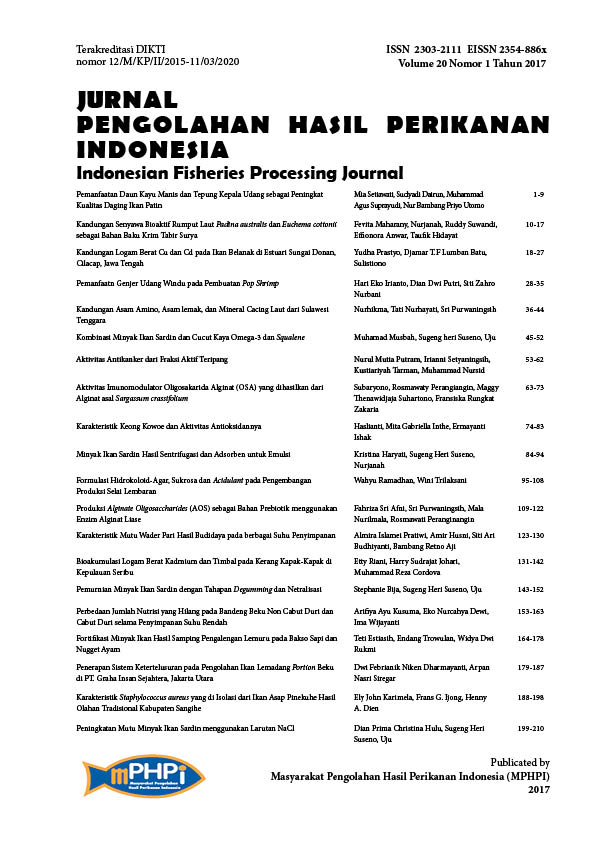Production of Alginate Oligosaccharides (AOS) as Prebiotic Ingredients through by Alginate lyase enzyme
Abstract
Prebiotics is indigestible foods that can not be digested but can stimulate the growth and activity of bacteria in the digestive tract effecting human health. Alginate oligosaccharides (AOS) can be used as a source of prebiotic. That compounds can be produced enzymatically by cutting long chain alginates using alginate lyase. The aim of this study was to produce alginate lyase enzyme then producing Alginate oligosaccharides (AOS) as a prebiotic ingredients. The alginate lyase enzyme can be produced from Bacillus megaterium bacteria using a discontinuous fermentor. The enzyme was optimum temperature of 45°C and an optimum pH of 7.0. Alginate oligosaccharides production was performed with the addition of different enzyme concentrations 25, 50, 75, and 100 U. The result of the addition of enzyme (25, 50,75 U) showed that the value of polymerization degrees (DP) were between 4-5. However, the addition of enzyme (100 U) was in the range of DP 3-4. Bacterial probiotic growth test results of Bifidobacteria and Lactobacillus showed that 1% added AOS media were able to increase the growth of probiotic bacteria compared to the
media without addition of AOS. The addition Alginate lyase activity of 50 U in AOS production is the best treatment of both probiotic bacteria.
media without addition of AOS. The addition Alginate lyase activity of 50 U in AOS production is the best treatment of both probiotic bacteria.
Authors
AfniF. S., PurwaningsihS., NurilmalaM., & PeranginanginR. (2017). Production of Alginate Oligosaccharides (AOS) as Prebiotic Ingredients through by Alginate lyase enzyme. Jurnal Pengolahan Hasil Perikanan Indonesia, 20(1), 109-122. https://doi.org/10.17844/jphpi.v20i1.16498
Authors who publish with this journal agree to the following terms:
- Authors retain copyright and grant the journal right of first publication with the work simultaneously licensed under a Creative Commons Attribution License that allows others to share the work with an acknowledgement of the work's authorship and initial publication in this journal.
- Authors are able to enter into separate, additional contractual arrangements for the non-exclusive distribution of the journal's published version of the work (e.g., post it to an institutional repository or publish it in a book), with an acknowledgement of its initial publication in this journal.





